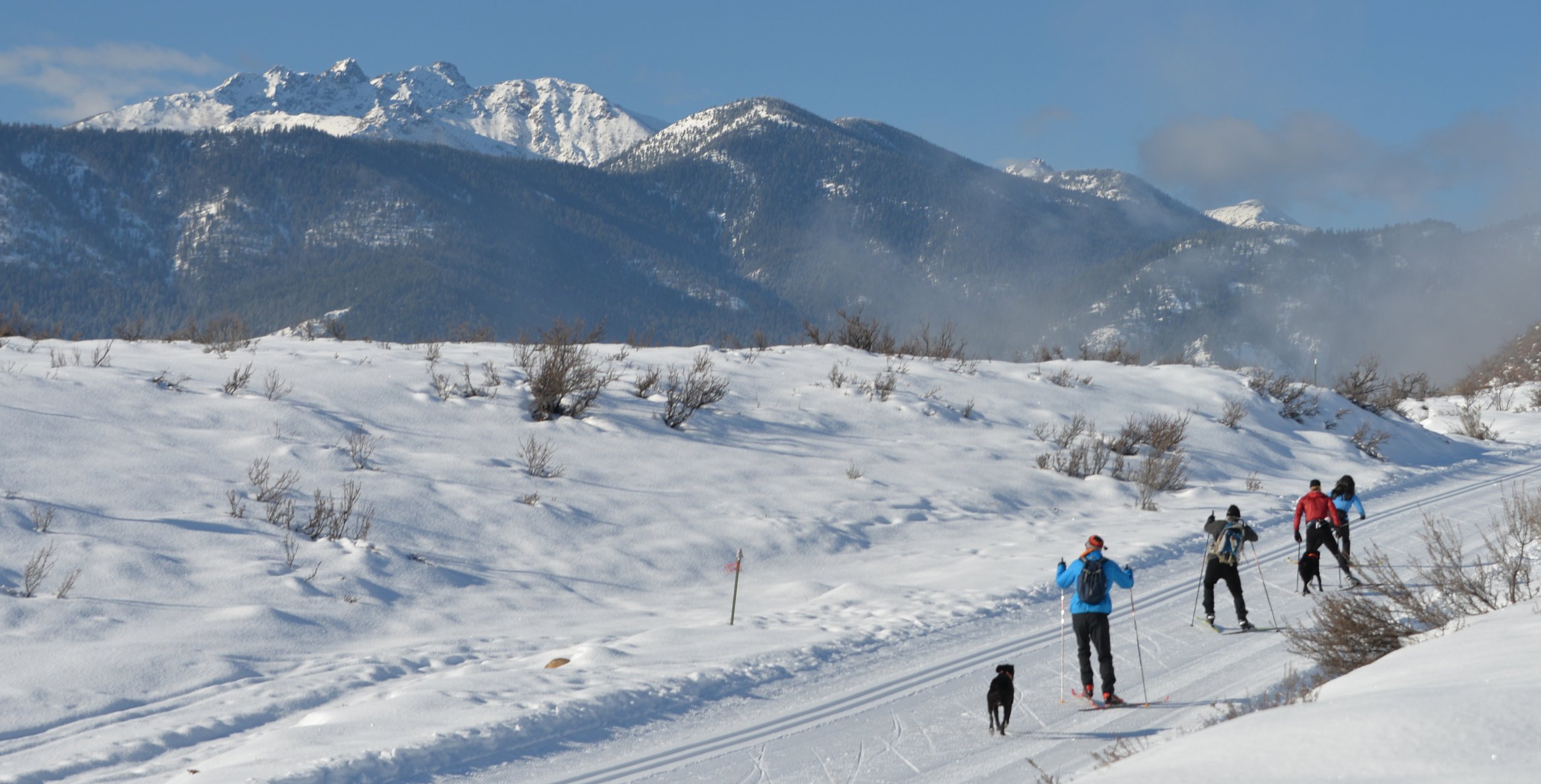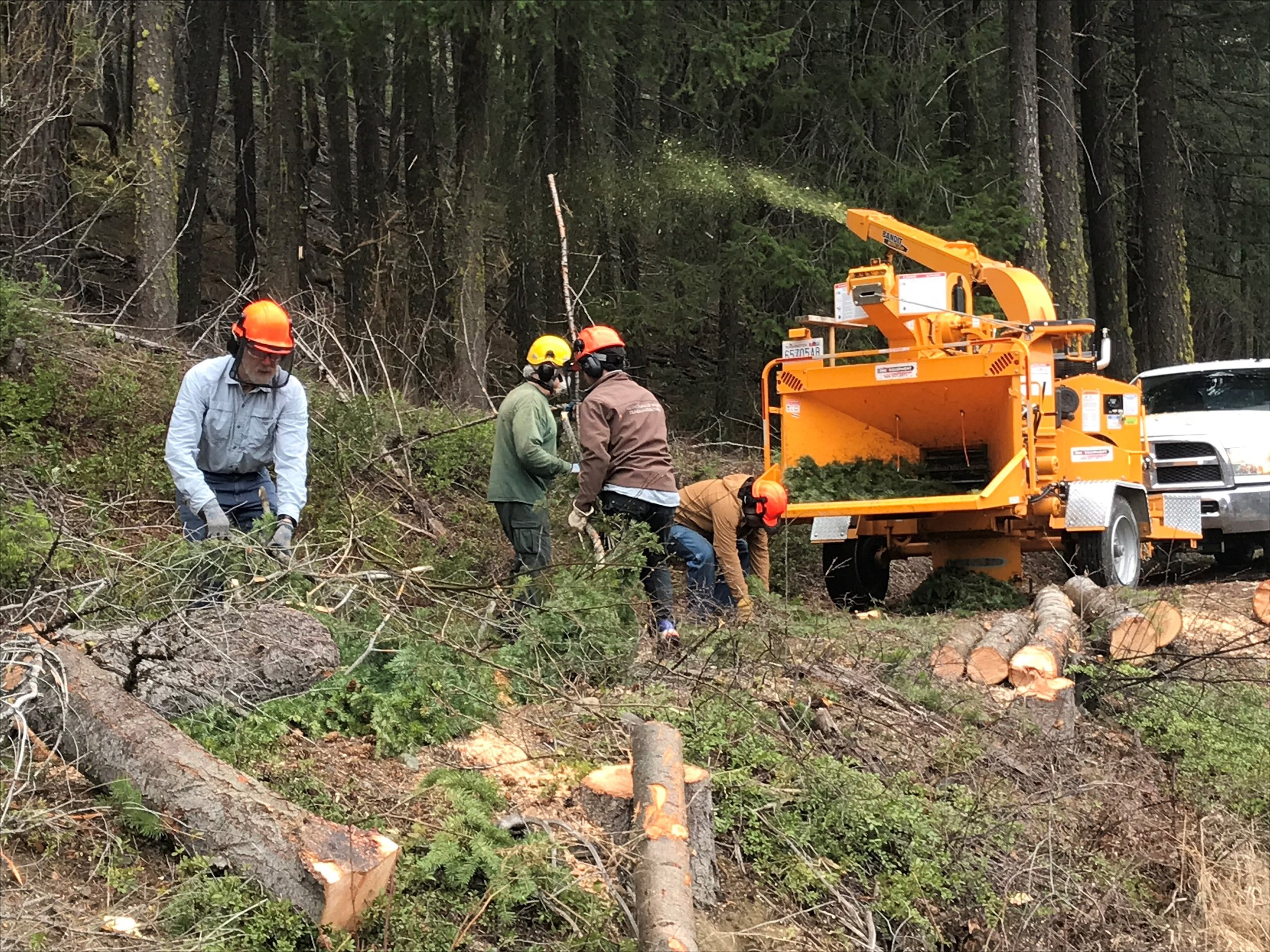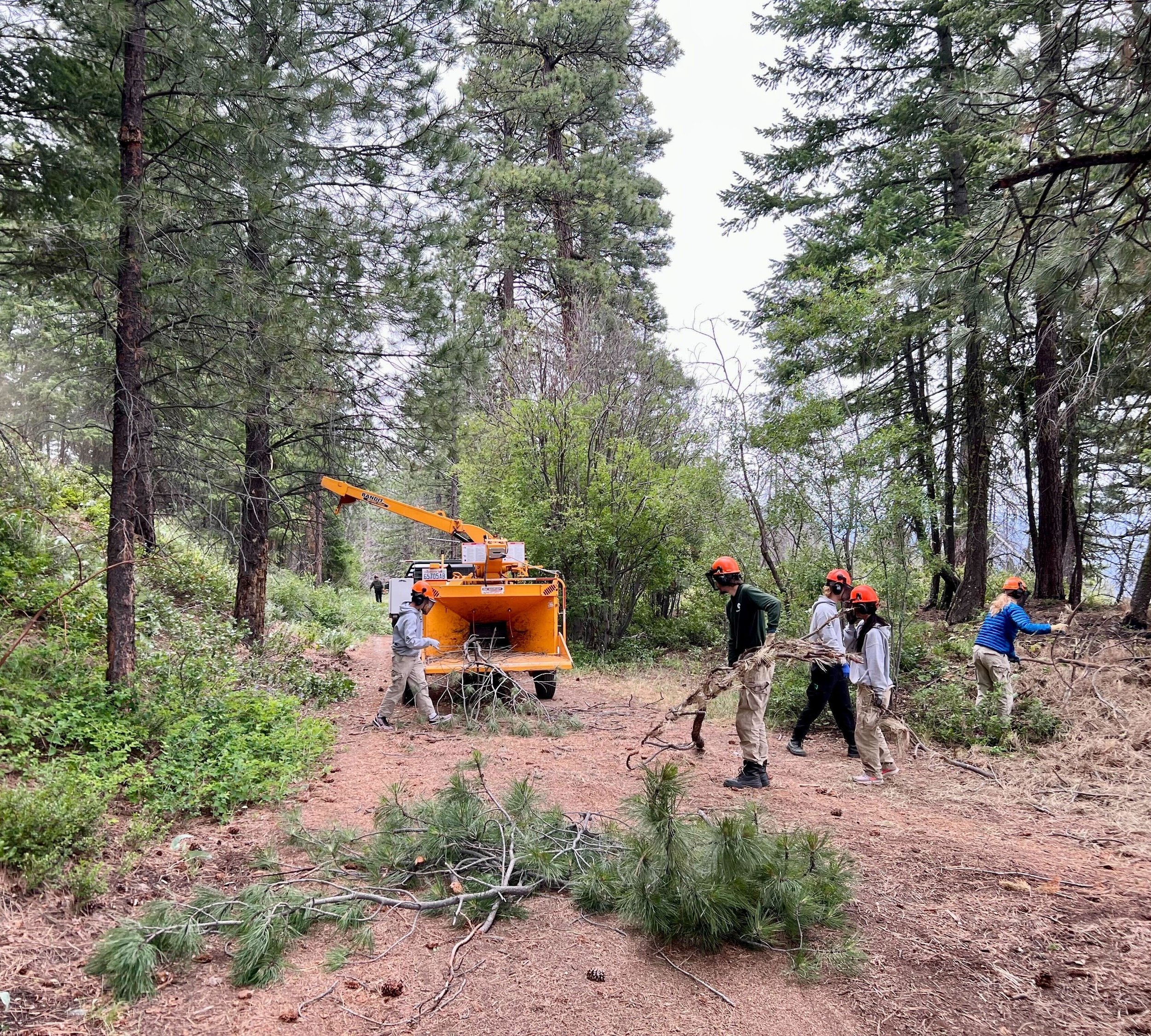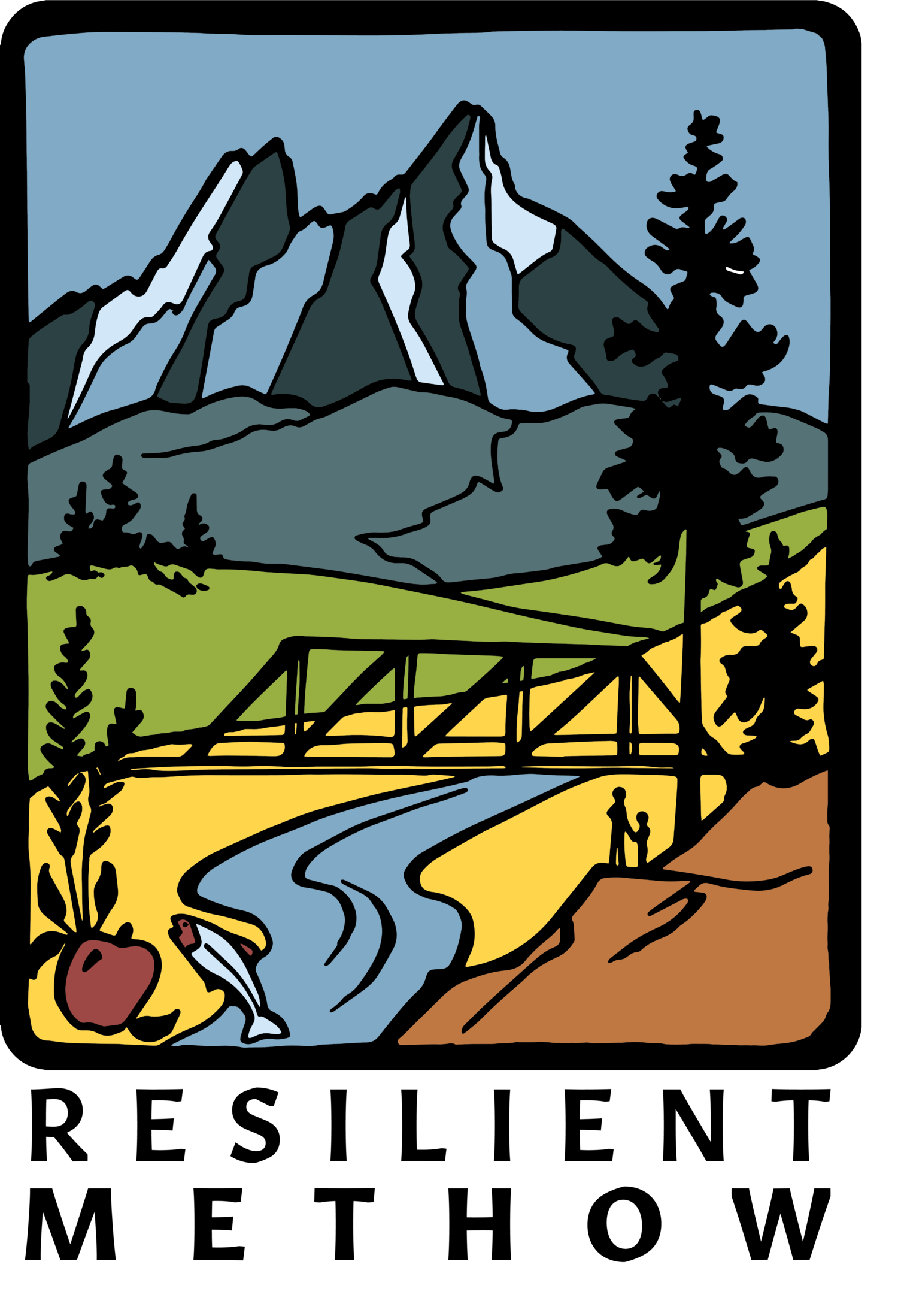Methow Trails: Natural Systems and Active Transportation.



Goal 2: Resilient and Healthy Natural Systems
Since 1977, Methow Trails has been working to maintain over 200 kilometers of trails spanning across the Methow Valley. The trails are used for hiking, biking, and running in the summer, spring, and fall and are groomed in the winter to allow for world-class Nordic skiing, snowshoeing, and fat biking. Methow Trails is the largest cross-country ski area in North America. Through trail maintenance, outreach, and public events, the organization is committed to natural resource protection as well as maintaining economic stability within the valley.
To ensure that areas of biodiversity remain protected and habitat loss is minimized while trails are in use, Methow Trails manages trail closures and strategically plans areas for new trail development. Endangered species, like the Sandhill Crane, are monitored, and trails they are nesting close to may be temporarily closed. Invasive species are also considered when trail maintenance is performed, and hand pulling and mowing are the primary methods of weed control, with herbicide spraying used as a last report. Newly established trails, which are especially susceptible to invasive plant growth, are spread with a native seed mixture and closely monitored.



The organization also plays a vital role in the management of forested habitats in the Valley. After the snow melts, work is focused on felling trees and limbing branches that block the trails. From a recreation standpoint, this helps to improve the experience of trail users and opens up the trails to allow for more snow to fall on them in the winter, expanding the ski season. The removal of overhanging branches also serves to increase the fire resiliency of the trails, allowing them to serve as firebreaks and access roads for fire personnel. By relying on recreational trails as a part of their fire-mitigation strategy, firefighters do not have to build as many other firebreaks, which are often disruptive to habitats and ecosystems. In addition to protecting the forests, trail planners are also mindful of the riparian zones and aquatic environments that are in close proximity to recreation areas. Because trail users often want to get close to rivers and lakes, they will create their own paths if the trails do not take them there. However, the trails must also be far enough away from the water that erosion does not become an issue and wildlife is not disturbed. A balance must be struck so that recreation can continue to co-exist with wildlife in the valley.
A future endeavor of Methow Trails is the Twin Trail–a non-motorized trail that will connect the Methow Valley schools, Twisp, and Winthrop. The hope is to provide year-round free, easy trail access to community members and visitors alike. This would reduce the need for people to drive between towns and to trailheads. The trail connection to the schools would allow for easier commutes for teachers, staff, students, and families, further reducing the number of vehicles on the road and lowering carbon emissions in the valley.
For more information about the Twin Trail project or Methow Trails, be sure to visit https://methowtrails.org/.
Photo Credit: Methow Trails

